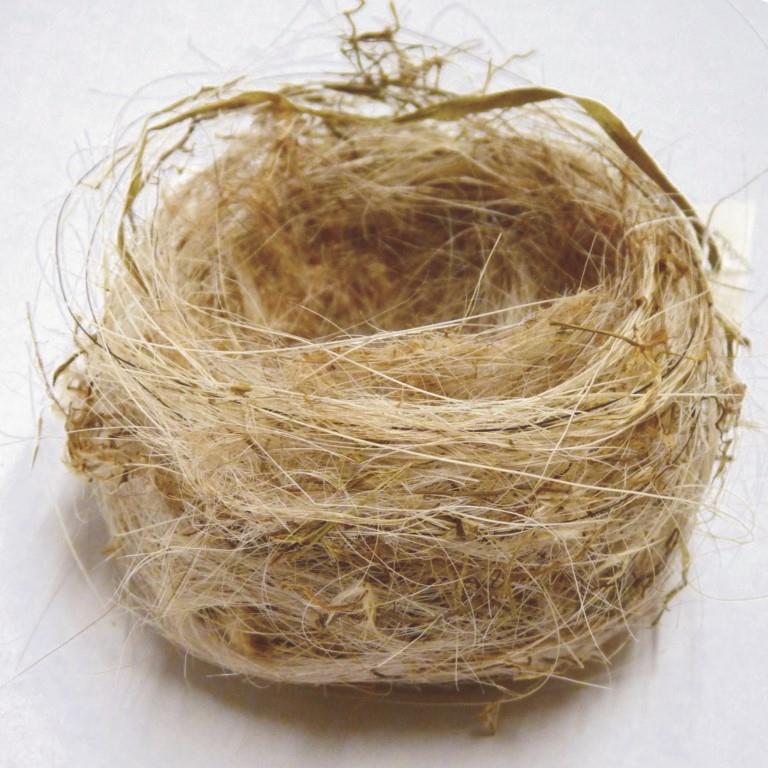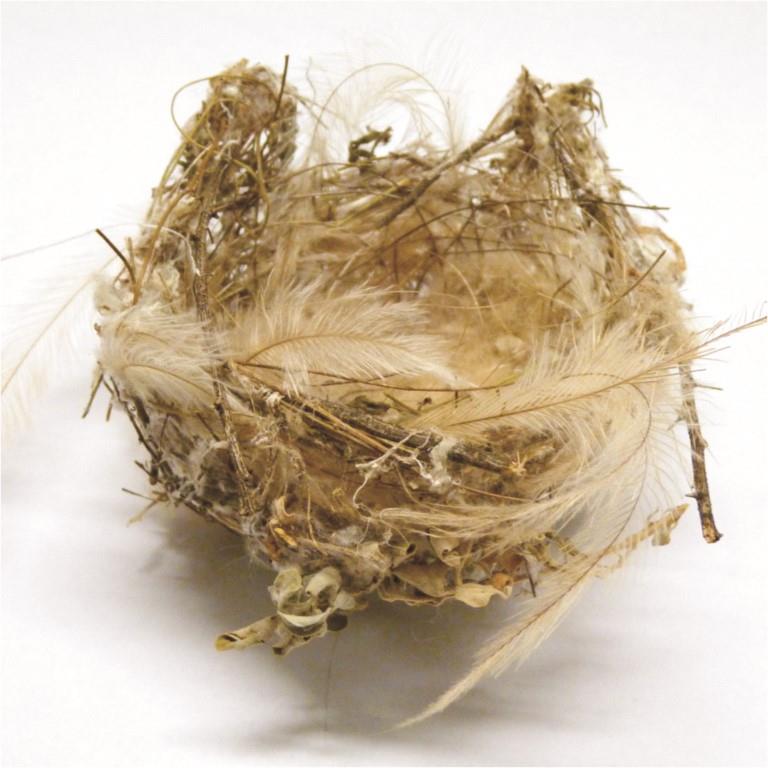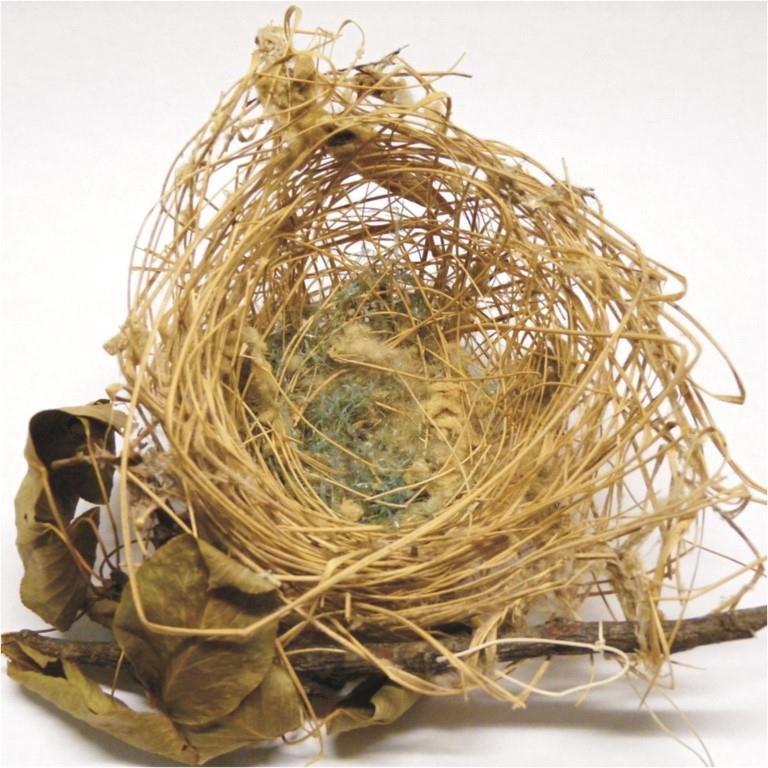Birds’ nests have evolved into many shapes and sizes, but they all function to provide a secure substrate for eggs and hatchlings, camouflage and defence from predators, as well as protect the eggs, hatchlings and incubating parent from harsh climatic conditions. My doctoral studies focused on understanding the factors influencing the structure and insulation of avian nests and hence the manner in which a nest may influence the energetic cost of incubation.

Factors influencing nest size and shape
Parent mass
Comparing the size and shape of nests of 36 Australian passerine species against parent mass reveals that nest surface area increases in direct proportion to the size of the parent. Nest diameter and height increase with parent mass but as nests become larger in line with increases in parent mass, the nest cup also becomes shallower and the opening becomes wider than expected, which allows for the space that the chicks will occupy.
Nest mass increases with parent mass at a rate that matches that of a supporting structure, suggesting that structural considerations of nest construction are of primary importance to nest design. The requirement for structural support is also evident for nest thickness, which increases more than proportionally expected as parent size increases. Structurally adequate nests become thicker than expected for their size in larger birds.
The clutch
Of interest is how the size or number of eggs in a clutch relates to the size of a nest. The clutch surface area and the internal surface area of the nest increase simultaneously; and the clutch volume and volume of the nest cup are also associated. Since nest design for the majority of birds in the study is in part influenced by the male and egg shape is controlled by muscles in the pelvis of the female, it is likely that one does not control the other. However, nest and egg size/shape are influenced by body size and ancestry. Therefore, it is likely that the nest and clutch are in fact independent, yet matched secondarily due to the shared influence of body mass and genetic ancestry.

Factors influencing nest insulation
Nest structure
As we know, the nest surface area increases in proportion to bird size, however nests become much thicker than expected as bird size increases. The thick walls provide structural support for the parent and clutch, with the consequence that structurally adequate nests achieve greater insulation than expected, as they increase in size. Nests are often viewed as objects that are designed to prevent heat loss from the clutch and incubating parent; however the requirement for adequate structural support is the primary selective influence on nest construction, not the requirement for insulation.
Nest microclimate
By assessing the insulation of Spiny-cheeked Honeyeater (Acanthagenys rufogularis) and Yellow-throated Miner (Manorina flavigula) nests under varying wind conditions, I found that wind enters the nest material and dissipates heat, resulting in a decrease in thermal insulation with greater wind speeds. The consequence of increased wind currents around and through the nests would be a near-doubling in heat production required by the parent when incubating.
While ambient temperature does not influence the structure of nests in my study, it does influence the insulation of nests and the thermal efficiency of the material. However, temperature and precipitation (henceforth referred to as climate) act in combination, indicating that the response of Australian passerines to one variable depends upon the level of the other.
In sites with low temperatures, nest insulation may be important to maintain an appropriate microclimate for offspring and therefore birds construct nests with good insulation, irrespective of the rainfall at the site. For nests constructed in warm climates but at the two extremes of rainfall, there is a pronounced decrease in insulation for nests built in areas with high rainfall, compared to areas with low rainfall.
The effect of climate extends to the thermal efficiency of the nest materials, indicating that not only the ambient temperature, but also the precipitation of the breeding site, influences material selection during the nest construction phase. Birds breeding in warm and wet climates construct their nests with materials that have a poor thermal efficiency compared to those in dry climates. The warm temperatures may cause a relaxation in the need for insulation, and poorly insulating materials (such as sticks and grasses, rather than fur and wool) are possibly less absorptive and able to dry out faster following a rain event, to restore the insulating function of the nest.
To determine the effect of water (from rain, dew or absorption from the nest substrate) on the heat loss from the nest, I measured Tawny-crowned Honeyeater (Gliciphila melanops) nests under varying water content levels (from dry to saturated). Water penetrating the nesting material increases conductance of G. melanops nests by up to two and a half times the rate seen in a dry nest – a consequence of the decreased thermal efficiency of materials in a wet nest. As a result, additional energy is required by the incubating parent to keep clutches warm when nests become wet. Individuals should be capable of obtaining additional floral resources to deal with an energy deficit in cold and wet conditions. However, if floral resources are poor and an individual is unable to meet such energy demands, it may abandon the nest altogether.

Summary
My studies highlight the importance of nest design and construction for the thermal properties of nests – small variations in nest design can have significant impacts on the insulation value of a nest, which will in turn influence the energetic cost of incubation. The effect of rain and wind on nest insulation, and the consequence of this for the energetics of the incubating parent, reinforces the view that appropriate nest site selection that provides additional shelter is crucial for avian reproductive success.
Categories:
Bird, Bird Watching, Native Fauna, Nest, Physiology